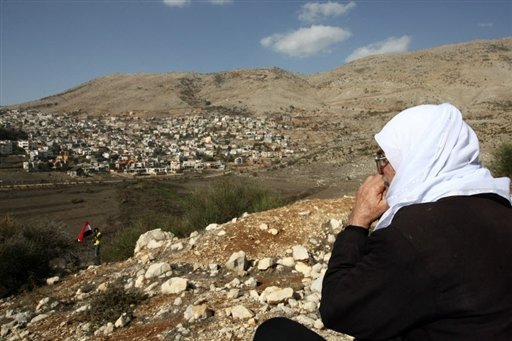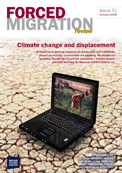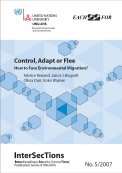
A Syrian man sits in the village of Ain al-Tineh, 70 kms southwest of Damascus. Photo credit: AFP
June 2, 2009 (AFP) – Some 160 villages in northern Syria were deserted by their residents in 2007 and 2008 because of climate change, according to a study released on Tuesday.
The report drawn up by the International Institute for Sustainable Development (IISD) warns of potential armed conflict for control of water resources in the Middle East.
“The 2007/8 drought caused significant hardship in rural areas of Syria. In the northeast of the country, a reported 160 villages have been entirely abandoned and the inhabitants have had to move to urban areas,” it said.
In Syria and also in Jordan, Israel and the occupied Palestinian territories, “climate change threatens to reduce the availability of scarce water resources, increase food insecurity, hinder economic growth and lead to large-scale population movements,” the report said.
“This could hold serious implications for peace in the region,” the Canada-based institute said.
The study, financed by Denmark, predicts a hotter, drier and less predictable climate in the Middle East, “already considered the world’s most water-scarce and where, in many places, demand for water already outstrips supply.”
Oli Brown, who co-wrote the report with Alec Crawford, said: “Climate change itself poses real security concerns to the region. It could lead to increased militarisation of strategic natural resources, complicating peace agreements.”
“Israel is already using climate change as an excuse to increase their control over the water resources in the region,” he said.
In the study’s conclusions, Brown and Crawford said: “As a region, the Levant produces a tiny fraction of global emissions — less than one percent of the world total.
The exception among Levant countries is Israel, “whose emissions — 11.8 metric tonnes per capita — exceed the European average of 10.05 tonnes,” they said.
“This may exacerbate the existing deep mistrust of the West, including Israel, which would be seen as causing a problem that it is unable or unwilling to resolve,” they said.
The study also revealed the challenge posed by population growth.
“The combined population of the Levant will grow to 71 million by 2050 from 42 million in 2008” with major implications for water demand, food supply, housing and jobs, it said.
The IISD report said there is much that Middle Eastern governments and authorities, civil society and the international community can do to respond to climate change and the threats it may pose to regional peace and security.
“They can promote a culture of conservation in the region, help communities and countries adapt to the impacts of climate change, work to reduce greenhouse gas emissions and foster greater cooperation on their shared resources,” it said.
The report says climate change could affect farm productivity in Syria, where agriculture represents 23 percent of gross domestic product and employs 30 percent of the economically active population.
“Some 13 percent of agricultural land was downgraded between 1980 and 2006 because of… urban expansion and agricultural, industrial and tourism activities,” Fayez Asrafy, a desertification expert, told AFP.
“Rainfall shrank by 10 millimetres (a year) between 1956 and 2006 while temperatures rose by (an average) 0.5 degrees Celsius, though below the worldwide average of 0.6 degrees,” Syrian meteorologist Khales Mawed said.
The IISD predicts even modest global warming would lead to a 30-percent drop in water in the Euphrates, which runs through Turkey, Syria and Iraq, while the Dead Sea would shrink in volume by 80 percent by the end of the century.
Source: AFP



